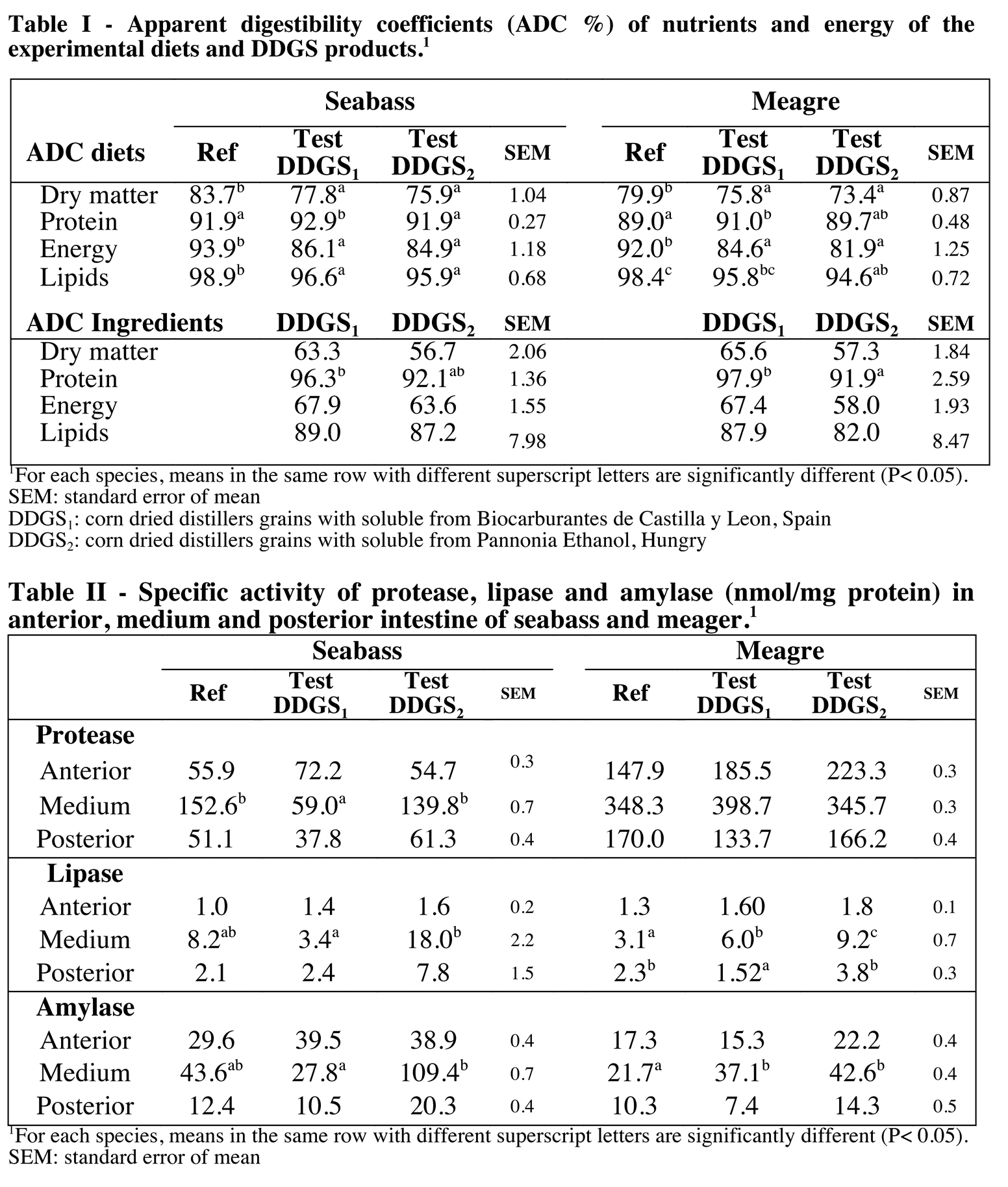Aquafeed industry faces numerous challenges, including heavy dependence on fish meal and fish oil. Search for new and alternative aquafeed ingredients, with adequate nutritional value and nutrient bioavailability, market availability and safety, has become a priority. Plant ingredients, namely those derived from by-products of food, fermentation and pharmaceutical industries are promising ingredients. Distillers dried grains with solubles (DDGS) are readily available in the market and are less expensive than other conventional plant ingredients, on a protein-cost basis. However, evaluation of their nutritional value is required before considering their potential of inclusion in least-cost feed formulas, and to promote the “eco-nutrition” and sustainability of aquaculture. Studies on the potential of dietary incorporation of DDGS in aquafeeds are limited to a few herbivorous and omnivorous fish species. Thereby, the objective of the present study was to evaluate the nutrient availability of two different sources of corn DDGS and their effect on digestive enzyme activities of two carnivorous species, the European seabass and meagre juveniles, this way testing the potential of DDGS products for future incorporation in diets for carnivorous fish species.
Material and methods
Two digestibility trials were performed with European seabass (Dicentrarchus labrax) and meagre (Argyrosomus regius) juveniles. The trials were carried out in a thermoregulated water system, equipped with 9 tanks with feces settling column connected to the outlet of each tank (designed according to the Guelph system). During the trials water temperature averaged 22ºC. A reference diet (RF; 46% protein; 16% lipid) and 2 test diets consisting of 70% Ref and 30% of the tested
feedstuff were produced. To each diet was added 0.5% chromic oxide as an external digestibility marker. Two corn DDGS sub-products were tested (obtained from Biocarburantes de Castilla y Leon, Spain and Pannonia Ethanol, Hungary). At the start of each trial, nine homogeneous groups of 6 seabass (initial body weight 206 g) or 9 meagre (initial body weight 79 g) were randomly allocated to each tank. Each experimental diet was fed by hand, to visual satiation, twice daily, to triplicate
groups of fish. The fish were adapted to the diets for 10 days, and then feces from each tank were collected once a day for 30 consecutive days to obtain representative samples of feces material. All feces collected from each tank were pooled and stored at -20ºC until analysis.
At the end of each trial, 6 hours after the morning meal, two fish from each tank were randomly sampled and the digestive tract excised; adherent adipose and connective tissue was carefully removed, and the intestine was divided in three sections (anterior, medium and posterior) and immediately frozen in liquid nitrogen. Activity of proteases (pH=8), lipase and amylase was measured in each intestine portion.

Results
For both species, the apparent digestibility coefficients (ADC) of dry matter, lipid and energy were significantly higher in the reference diet than in test diets (Table I). On the contrary, protein digestibility of DDGS1 diet was significantly higher than that of the reference diet. Irrespectively of the species, ADC of dry matter, energy and lipid was not affected by the DDGS source, but protein digestibility was higher for DDGS1than for DDGS2.
In both species, protease, lipase and amylase activity was higher in the medium intestine than in the other intestinal portions (Table II). Dietary incorporation of DDGS affected digestive enzyme activities only in the medium intestine portion. For meagre, and irrespectively of the intestine portion, dietary incorporation of DDGS did not affect protease activity, but it increased lipase and amylase activities in the medium intestine. For seabass, dietary incorporation of DDGS2 significantly increased protease, lipase and amylase activities in the medium intestine. However, the inverse was true for the dietary
incorporation of DDGS1.
Conclusion
Overall, ADC of protein and energy of DDGS was high in both seabass and meagre. Dietary incorporation of DDGS2 affected somehow digestive enzymatic capacity of these species and this effect must be further investigated.
August 2013




